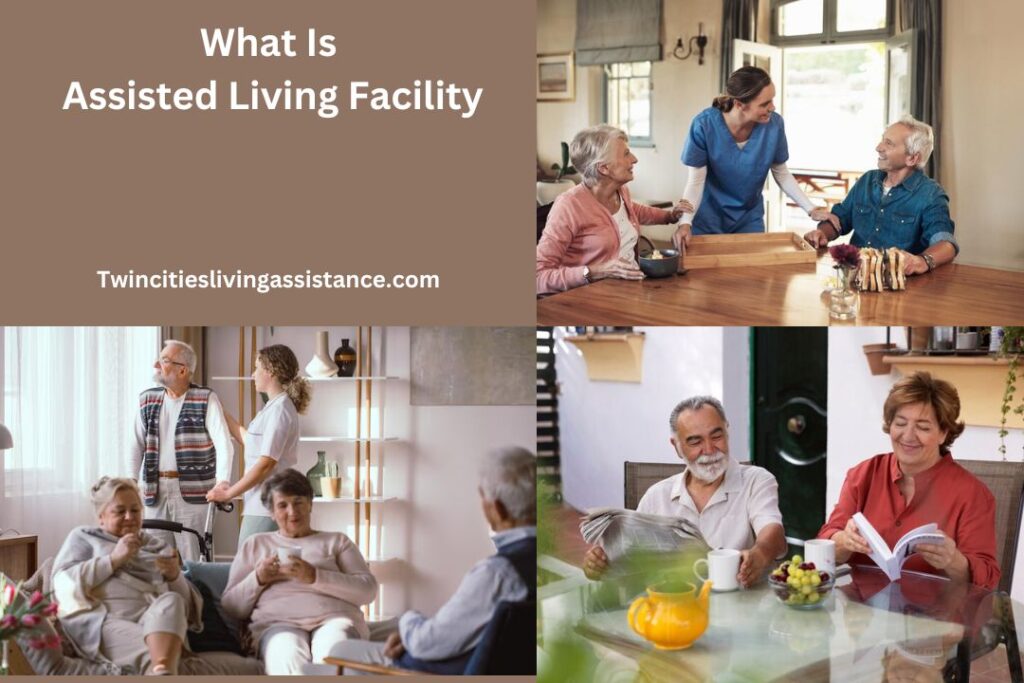
Assisted living is a growing option for seniors who require help with day-to-day tasks but still desire to maintain some degree of independence. Understanding how assisted living works, its services, costs, and benefits can provide peace of mind for individuals and their families looking for care options. In this article, we’ll explore what assisted living is, how it operates, who needs it, and what to consider when choosing a facility.
What is Assisted Living?
Assisted living is a type of long-term care designed for individuals who need assistance with activities of daily living (ADLs) such as bathing, dressing, medication management, and meals but do not require the intensive medical care of a nursing home. These communities offer a blend of personal care services and independence. Residents live in private or shared apartments and have access to a range of services, including help with mobility, housekeeping, and social activities.
At Twin Cities Living Assistance, we provide compassionate and personalized care to help seniors maintain their independence while receiving the support they need. Our facility offers a safe, comfortable, and engaging environment where residents can enjoy a high quality of life with 24/7 assistance and a variety of amenities designed for their well-being.
The Types of Assisted Living Facilities
Assisted living facilities come in various types, each catering to different needs. Some facilities specialize in certain care types, while others offer a broader range of services:
- Independent Living Communities: These are ideal for seniors who can live independently but prefer not to handle household tasks like cleaning, cooking, and maintenance. They often feature social programs and group activities.
- Memory Care Facilities: These facilities are designed for seniors with dementia or Alzheimer’s. They provide specialized care, secure environments, and trained staff to assist with cognitive decline.
- Residential Care Homes: Also known as board-and-care homes, these are smaller, home-like settings that offer more personal care in a cozy environment, often in a residential neighborhood.
- Continuing Care Retirement Communities (CCRCs): CCRCs offer a range of care levels, from independent living to skilled nursing care. These communities allow residents to transition to higher levels of care as their needs change without having to move to a different facility.
Who Needs Assisted Living?
Assisted living is typically designed for older adults who:
- Need help with basic daily tasks like dressing, eating, or medication management but don’t require round-the-clock medical care.
- Struggle with chronic health conditions, mobility issues, or cognitive decline (e.g., early stages of dementia).
- Feel isolated or unable to manage a home on their own due to physical limitations or mental fatigue.
It’s important to note that assisted living is not for individuals who need complex medical care, like those requiring ventilators or IV therapies, as this level of care is typically provided in nursing homes.
Services Offered in Assisted Living
Assisted living communities provide a wide range of services to ensure residents can live comfortably while receiving the help they need:
- Personal Care Assistance: Staff can help with daily activities, including grooming, dressing, and bathing.
- Medication Management: Most facilities assist with administering and monitoring medications to ensure residents take their prescriptions as prescribed.
- Meal Services: Residents enjoy nutritious meals prepared by the facility, with options for special diets (e.g., low-sodium, diabetic-friendly).
- Social and Recreational Activities: To promote engagement and mental well-being, many assisted living communities offer organized activities such as exercise classes, crafts, games, outings, and social events.
Cost of Assisted Living
The cost of assisted living varies significantly based on location, the type of facility, the level of care needed, and the size of the living space. On average, assisted living can cost between $2,500 to $6,000 per month in the U.S.
Factors that influence cost:
- Location: Areas with higher living costs, like large cities or coastal regions, tend to have higher fees.
- Care Needs: The more assistance a resident needs, the higher the monthly fees.
- Facility Type: Luxury facilities with upscale amenities will cost more than basic care homes.
Payment Options:
- Medicaid: Some states offer Medicaid programs that can help cover the costs of assisted living, though not all facilities accept it.
- Long-Term Care Insurance: Individuals who have long-term care insurance may be able to use their policy to help cover the cost.
- Private Pay: Many families pay out-of-pocket, using personal savings, pensions, or retirement funds.
Finding the Right Assisted Living Facility
Choosing the right facility is crucial. Here are steps to guide the search:
Research and Compare: Start by researching facilities in the desired location. Read reviews, check ratings, and visit websites.
Visit Facilities: Schedule tours to get a feel for the environment. Ask questions about staffing, services, and amenities.
Evaluate Staff: Ensure staff are well-trained and licensed. Ask about caregiver-to-resident ratios and how staff handle emergencies.
Ask About Costs and Contracts: Understand all fees, payment policies, and contract terms.
The Process of Moving into Assisted Living
Moving into assisted living can be a stressful process, but preparation can ease the transition:
Assessment: Most facilities require a thorough evaluation of health and care needs before admission.
Legal Paperwork: The facility will provide a contract that outlines services, rights, and responsibilities. It’s essential to read through these documents carefully.
Packing and Transition: Moving involves sorting through belongings and deciding what to bring. Many families help with packing, while some facilities offer moving services.
Emotionally, the transition can be difficult for both the individual and their family. It’s essential to stay positive and maintain open communication to help adjust to the new living situation.
The Role of Family in Assisted Living
Family members play an essential role in the well-being of residents in assisted living:
- Stay Involved: Regular visits and communication help ensure that the resident’s needs are being met.
- Advocate for Care: Family members can advocate for specific care needs, including adjustments to care plans or dietary preferences.
- Emotional Support: Ongoing emotional support is vital in helping the individual adjust to their new living situation.
How Assisted Living Promotes Independence
While assisted living provides care, it also fosters independence:
- Tailored Care Plans: Each resident has an individualized care plan that evolves as their needs change, ensuring they get the appropriate level of assistance.
- Encouraging Self-Sufficiency: Facilities promote autonomy by providing opportunities for residents to do things on their own, like preparing their meals or participating in activities.
Assisted living aims to strike a balance between offering necessary help and respecting a resident’s desire for independence.
The Importance of Socialization in Assisted Living
Isolation can be a significant issue for older adults. Assisted living communities help combat loneliness by offering ample opportunities for socialization:
- Community Activities: Regularly scheduled events such as games, exercise classes, and outings help residents stay engaged and build relationships.
- Peer Interaction: Living in close quarters with others who share similar experiences allows for the development of friendships and emotional support networks.
Socialization helps prevent depression and cognitive decline, which are common in isolated seniors.
Health and Safety in Assisted Living
Safety is a top priority in assisted living facilities:
- Emergency Response: Staff are trained to respond quickly to emergencies, and many facilities have 24/7 medical staff on-site.
- Fall Prevention: Many assisted living communities have features designed to prevent falls, such as handrails, non-slip floors, and emergency call buttons.
- Health Monitoring: Regular health checks, including blood pressure monitoring and wellness assessments, are often part of the service.
Assisted Living vs. Home Care: Which is Better?
While both assisted living and home care provide personal care services, they differ significantly in their approach:
- Assisted Living: Offers a community-based environment with a variety of services, including social activities and healthcare monitoring.
- Home Care: Provides services within the comfort of the senior’s own home, focusing on specific needs like meal preparation, personal care, and medication assistance.
The decision between assisted living and home care depends on the individual’s health needs, personal preferences, and financial situation.
Legal and Regulatory Aspects of Assisted Living
Assisted living facilities are regulated by state and federal laws, which vary by location:
- Licensing: Most states require facilities to be licensed and regularly inspected to ensure they meet safety and quality standards.
- Resident Rights: Residents have rights regarding their care, privacy, and ability to make decisions about their treatment.
- Complaint Resolution: If issues arise, there are often state agencies or ombudsman programs to address concerns or complaints.
Common Myths About Assisted Living
There are many misconceptions about assisted living:
- Myth 1: Assisted Living is the Same as a Nursing Home: Nursing homes provide more medical care, while assisted living focuses on personal care and independence.
- Myth 2: Assisted Living is Only for the Elderly: While assisted living is primarily for seniors, it can also cater to younger adults with disabilities who need assistance.
- Myth 3: It’s Too Expensive: While the cost can be high, many families find that assisted living is more affordable than hiring home health aides or the cost of nursing home care.
Trends and Innovations in Assisted Living
The assisted living sector is evolving with new trends:
- Technology: Smart home devices, remote health monitoring, and virtual visits are enhancing care and providing more safety and convenience for residents.
- Design Improvements: Modern assisted living communities feature innovative designs, such as home-like environments with private rooms, communal kitchens, and wellness centers.
- Personalized Care: A growing trend is the move toward personalized, resident-focused care that adapts to individual needs.
Conclusion
Assisted living provides an excellent option for seniors who need some assistance but want to maintain their independence. It offers a range of services, from personal care to social activities, all within a supportive environment. Families should carefully consider their options, ask the right questions, and evaluate facilities to find the best fit for their loved one’s needs.
FAQs:
What’s the difference between assisted living and a nursing home?
Nursing homes provide more extensive medical care, while assisted living focuses on personal care and maintaining independence.
How much does assisted living cost?
On average, assisted living can cost anywhere between $2,500 to $6,000 per month, depending on the location and level of care needed.
Does Medicaid cover assisted living?
Some Medicaid programs help cover assisted living costs, though it varies by state. Not all facilities accept Medicaid.
Can I visit my loved one in assisted living?
Yes, families are encouraged to visit regularly and stay involved in their loved one’s care.
Is assisted living only for older adults?
While it is mainly for seniors, younger adults with disabilities may also benefit from assisted living.
How do I find the best-assisted living facility?
Research online, tour facilities, ask about staff qualifications, and evaluate amenities to find the best option for your loved one.


